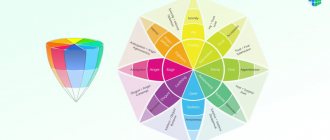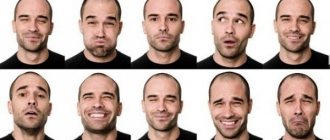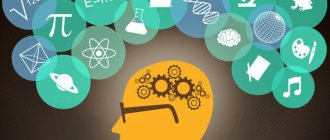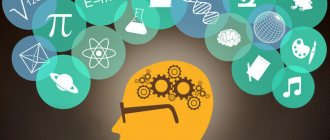Bibliotherapy is a psychotherapeutic method that uses literature as a form of correction of the patient’s mental state. This is treatment with the help of a book. The patient associates himself with the hero of the work and the situations in which he finds himself. All the hero’s feelings and experiences become the patient’s personal experiences. Thus, unresolved conflicts and problems are revealed, the patient gains awareness of their causes, and finds solutions.
History of the method
The history of bibliotherapy goes back to the times of Ancient Egypt. In medieval Europe, healers used books as medicine for the soul. However, bibliotherapy received the status of a science only at the beginning of the 20th century. This term was first mentioned by the American psychologist S. M. Crothers in 1916.
In Russia, the first practical steps in this direction were taken only in 1927 at the Psychoneurological Institute of Kharkov. It was then that the main effect of the technique was noticed - the patient recognizing his problem and finding a solution using examples from books.
Where to study to be a bibliotherapist
There is no separate direction of training “Bibliotherapy”. The concept itself includes two and stands at the intersection of psychology and library science. Therefore, initially they receive the profession of librarian and psychologist.
To become a librarian, you do not have to go to university. You can also learn a profession at a specialized college or technical school. Below are several Russian universities that offer training in this specialty:
- East Siberian State Academy of Culture and Arts
- Moscow State University of Culture and Arts
- Altai State Academy of Culture and Arts
- Belgorod State Institute of Culture
- Omsk State University named after. F. M. Dostoevsky
In Nizhny Novgorod, you can get a library education at the Nizhny Novgorod Regional College of Culture (Bor). Training is by correspondence only. The educational institution has been training personnel since 1937. You can read more about the program and requirements on their website.
It’s one thing to know how to work with different age groups (follow a template), another thing is to understand the essence of the problem. The second is much more effective, so first of all, a professional bibliotherapist needs knowledge of psychology. In Nizhny Novgorod, you can study to become a psychologist at Nizhny Novgorod State University. Lobachevsky and NSPU named after. Kozma Minin, as well as in local branches of other universities.
Natalya Zinovieva16+
Areas of application, goals
Bibliotherapy arose at the intersection of 4 sciences: medicine, psychology, psychiatry and librarianship. But it has found its application in a variety of areas: psychology, pedagogy, working with children, difficult teenagers and the elderly. The technique is used in psychiatric clinics, rehabilitation centers, orphanages, schools, and nursing homes.
Objectives of the methodology:
- Teach the patient positive thinking, remove negativism and pessimism from consciousness.
- Teach you to honestly and freely admit your feelings and problems, without feeling fear, guilt and shame.
- Help the patient find alternative ways to solve problems and overcome dead-end situations.
- Stimulate imagination and positive emotions.
- Help you rise above troubles and look at them from the other side.
The main advantage of bibliotherapy is the absence of intrusive instructions, there is only a general meaning and each reader takes exactly what he needs.
How to choose a book
The tool of bibliotherapy is a book, but not every book. This is not about reading a random book, it is necessary to take into account the uniqueness of each reader (gender, age, education, life experience...), his current situation.
Before using bibliotherapy, it is necessary to establish the goals to which it will be aimed. Poor book selection can have a negative impact. Treatment should help a person adequately cope with a difficult life situation, compensate for negative changes in the psyche, overcome the crisis, and therefore achieve complete rehabilitation.
List of books for preschool children
Bibliotherapy literature for children readers:
- “Children from Bullerby” (A. Lingren) . Britta and Anna do not have a dog, rabbits or any other animals. But they have a grandfather. This is the best grandfather in the world. He lives in Norrgården and has his own room on the 1st floor. It is such a nice room and such a nice grandpa that the children from Bullerby always go there in their free time.
- “I can jump over puddles” (A. Marshall). This book is an autobiographical story from the author's childhood. It describes how Alan suffered from polio, which immobilized both of his legs. But this did not stop him on the path to his goals. The hero did not give up, he did not accept his handicap, he tried to do everything that his peers did.
- “We are the children from Zoo Station” (Christian F.) . This autobiographical work gives hope that there is always a way out of a hopeless situation.
Examples of books for teenagers
Bibliotherapy literature for teenage readers:
- “I was 12 years old...” (Natalie Schweigeffer) . A true story about a girl who was sexually assaulted. From the age of 12, her own father bullied and intimidated her. Natalie endured hell for 5 years before plucking up the courage to escape with the rest of the family. Topic: child sexual abuse.
- “Confession of a model” (Martina Koprzyvova) . An open confession of a young successful female model describing her career path from almost childhood, through the difficult puberty period to the present day. Topic: addiction, eating disorders, psychosomatic problems.
- "Diary of a Cool Outsider or How I Beat Bullying" (Eric Kahn Gale) . Eric was a normal boy until the 6th grade, but for some inexplicable reason, a group of classmates made him an outsider. Even his best friend stood up to him. Topic: bullying, friendship, school.
Examples of books for adults
Bibliotherapy literature for adults and elderly readers:
- "The Man Who Planted Trees" (Jean Giono) . The story is told from the point of view of a young man on a journey through the desolate French Alps. Theme: inner determination, the meaning of life, clear, unshakable happiness.
- “365 short stories for the soul” (Bruno Ferrero) . A series of good stories by the popular author Bruno Ferrero. Topic: relationships, friendship, sacrifice for others.
- "Dancing as Fast as I Can" (Barbara Gordon ) An autobiographical confession of a successful emancipated woman, screenwriter and director of New York television, who mobilized all the strength of her personality to live without drug addiction. Topic: mental disorder, anxiety, depression, substance abuse, relationships.
Bibliotherapy methods
Corrective method
A distinctive feature is the lack of focus on any mental processes. This method is aimed at correcting the client’s life situation, but there is no deep intervention in the psyche. The method acts superficially and gently, and is indicated for people with mild disorders and complaints.
Its goal is to compensate for the lack of the patient’s own images and behavior scenarios. It is used for patients with a lack of their own ideas about life situations, low self-esteem and anxious thoughts. Preference is given to light entertainment works.
The result is the patient’s identification and awareness of his emotional state, finding resources within himself.
Psychocorrectional method
The method is characterized by the fact that it affects the mental state of a person, affects deep processes and painful conditions. In this case, the patient is a person who has lost the joy of life, is depressed, and burdened with difficult experiences.
What happens to a person when using the method? Control over mental manifestations appears. The patient is aware of what is happening and his role in it. In addition, he begins to openly express emotions and compare them with the emotions of others. He acts more adequately, avoiding extremes (too strong and too weak emotional reactions). The patient reproduces in his imagination the actions of the hero, scrolls through scenarios of possible events. The result is an adequate response to the situation, its rethinking, and the reduction of internal conflict to zero.
What to read to children?
Reading is no less beneficial for children.
The best tools for a child's mind are:
- Fairy tales.
- Fables.
- Stories.
I would especially like to emphasize the influence of fairy tales, which has an impact on all facets of a child’s personality:
- Intelligence increases, the child understands the cause-and-effect relationships between events, and expands his vocabulary.
- An understanding of the role of groups, the relationships between them and the rules of social behavior comes. There is also a feeling of being part of a group and an awareness of the value of this fact.
- The emotional sphere is affected, and a rich world of feelings and sensations opens up before the child, which he has not yet received due to his limited life experience. There comes an understanding of what the people around you feel and sense, and that everyone is alike.
- In the sphere of behavior, the ability to analyze moral relations and the ability to predict the negative consequences of certain actions appears, as well as to anticipate a threat and adequately defend against it.
Important ! A fairy tale influences a child by absorbing the social model of a positive character.
To summarize, I would like to say that reading is not only an excellent opportunity to spend time usefully, but also an excellent help for the health of the soul and body, which has practically no contraindications and can be recommended to people of all ages.
Everyone will be able to find a genre to their liking and, after reading, look at life in a new way, awakening a craving for it.
Types of bibliotherapy
Reading aloud
During the session, one of the group of patients reads a separate chapter or episode aloud, then there is a discussion and analysis of what was read. It is also possible to read by role and dry out audio recordings. In this technique, the therapist does not address the specific problems of those present. He just selects episodes so that it relates to the problems of the group. Each participant draws their own parallels and draws conclusions.
Retelling
Patients retell individual episodes from the work they read, expressing their opinions and visions. Sometimes the retelling occurs on behalf of the characters, from their point of view. The roles of the heroes are distributed among the participants, and the retelling is carried out on behalf of each of them. This is a great way to look at the situation from a different angle.
Writing your own works
This could be writing your own stories, individual scenes or poems. Sometimes participants are asked to come up with a future for the characters, thereby changing the storyline. After which the work is read aloud in the group, discussion and analysis take place.
Illustration
This method encourages the patient or group to try themselves in the role of illustrators. Participants can draw illustrations both for the work as a whole and for its individual parts. You can depict characters, their relationships, individual scenes. Illustrations can also be figurative and allegorical in nature. This method of bibliotherapy serves as a method of indirect diagnosis.
Identification
This method is in the nature of homework and asks the patient to identify with a character. As homework, the patient is asked to read individual passages of the work and draw a parallel between himself and the hero, evaluate the possibilities, compare the characters and situations. When meeting with a therapist, the patient explains the essence of what he read from the position of the hero. This significantly expands perception and helps a person put himself in other people’s shoes.
Home reading followed by discussion
The method involves weekly meetings between the therapist and the patient. The therapist selects literature and invites the patient to read individual parts of various works. Then there is a discussion of what was read. Contrast, parallel or selective reading can be used here.
Staging – impromptu
In this case, patients act out small excerpts from the work without memorizing roles or rehearsing. Each participant plays a specific role and represents the character exactly as he sees him. The same character will be completely different for different participants. Such a production involves many options: participants can change roles, the course of the plot development can be changed, a new scenario can be played out.
Therapeutic effect
Bibliotherapy is used in clinical practice as an additional measure to the main treatment. Alcoholism, drug addiction, addictive states give way next to the power of words. Poems are used to treat anxiety attacks and post-traumatic stress disorder. The book helps to cope with depression (it’s especially nice that, compared to traditional therapy, this method is not expensive and does not have side effects). In the case of books, you can always resort to self-medication: a 2004 study showed that improvements come in any case, no matter whether you read with a therapist or storm the texts on your own.
Experts from the English University of Warwick, in their course “Literature and Mental Health,” examine how books save in severe cases that do not require hospitalization: the loss of a loved one, the loss of an unborn child, a broken heart, aging and dementia... Shakespeare’s plays, Jane Austen’s novels and the lyrics of poets The “Lake School” in these cases has a “smoothing” effect on the wounded soul.
If you don’t have any particular problems, we can recommend “developmental” bibliotherapy. It is more often talked about by specialists who work with children and hope to defeat bullying with the help of good books.
Bibliotherapy for children
The property of the child’s psyche is to identify itself with a positive hero. This feature helps to adopt positive behavior patterns, which makes the therapist’s task easier. Almost every child is inclined to reflect on the behavior of the hero and evaluate his own behavior. However, children sometimes do not see the line between good and evil due to their age. The therapist’s task is to introduce the child to these concepts with the help of children’s works.
Young children very often do not realize the connection between an action and its consequences. Thanks to bibliotherapy, the baby learns to see this connection and learns responsibility. The child often has poor control over emotions and sometimes feels fear. In this case, the therapist selects literature so that it can calm the baby and set him in a positive mood.
Pros of this method
- The young patient does not require special preparation.
- It is not difficult for a therapist to choose a work for a child’s specific problem.
- Constant contact between the therapist and the child is not required. Having received a recommendation, the child can read independently or together with his parents.
- Unobtrusiveness of the technique. Here no one criticizes or scolds the child; he independently recognizes himself and his problem in the hero and the plot.
We also recommend reading: Dance therapy - dance therapy: let movement into your life! History of the method, exercises
Isotherapy
Art therapy or isotherapy
is a rehabilitation technology based on the use of art and used by psychologists, speech pathologists, animators and teachers for the rehabilitation and socialization of people.
Artistic creativity therapy helps eliminate or reduce neuropsychic disorders, restore and develop impaired functions and skills, and develop abilities for gaming, educational, and work activities in the process of creative activities.
A person expresses his inner state, sensations and experiences through drawing. Being directly related to the most important mental functions - visual perception, motor coordination, speech, thinking - drawing develops each function and connects them with each other, helping a person organize the acquired knowledge, formalize and record his ideas about the world around him.
Drawing solves psychological and personal problems - fears, anxieties, uncertainty, loneliness, overcomes negative experiences, builds hand confidence and precision of movements. For example, by the tonal and color scheme, rhythm and composition of the drawing, by the choice of characters and plot, psychologists judge the presence of problems in a person’s psyche and worldview.
Isotherapy classes harmoniously develop a person’s mental functions. Classes are varied in subject matter, form, methods of influence, and materials used. To master the material and develop skills in the process of sociocultural rehabilitation, complex techniques are used: drawing in combination with speech, music, and light.
The more creativity and creativity a person has, the longer his mind will not lose its freshness.
Bibliotherapy for the elderly
Most older people, just like young people, have their own problems and difficulties, these are:
- Family troubles.
- Health problems.
- Dissatisfaction and depression.
In addition, older people have their own characteristics. They do not like change and are sensitive to new information; they often feel awkward when comparing themselves to others. For this reason, old people almost always suffer from low self-esteem. All this has a detrimental effect on the psychological state, such a person is depressed and depressed.
In this case, treatment with a book becomes almost the only “shelter”.
As a rule, older people prefer serious “life” works, such as: “The Tale of a Real Man”, “How the Steel Was Tempered”, etc. In addition, they love to read Russian classical literature, philosophical or spiritual works. Attention! Working with older people is especially challenging for therapists. He will require special delicacy and preparation. Too strong emotions and going beyond the usual boundaries are unacceptable here. Because this will only harm the patient.
Features of social adaptation of people with memory impairments
Cultural and leisure activities play an important role in the socialization of people with age-related memory impairment. It provides an opportunity to return to society and, through various types of active leisure, to activate the mind and train memory. It can be:
— classes in artistic, applied, technical creativity;
— leisure holidays, competitions;
— excursions, games;
- business, commercial, logical, intellectual games and activities;
- quiet passive rest - reading, watching TV, listening to the radio, solving crosswords.
It is important to be able to choose and offer a person an activity that will not allow him to focus on painful sensations and experiences. Often this is applied artistic and technical creativity or a passive activity - reading, watching TV, listening to the radio. Thanks to this, older people feel better and their painful condition is alleviated.
Rehabilitation and social adaptation of older people with memory impairment depend on the participation of specialists. These are doctors, psychologists, teachers, defectologists, social educators, specialists in culture and rehabilitation of the disabled. For some reason, people who feel their memory is beginning to fail them rarely turn to doctors about this.
Let's take a closer look at different types of rehabilitation leisure activities.
Bibliotherapy technique, exercises
The basis of the method is systematic reading with the aim of improving the psychological state of the patient.
How is the lesson going?
Main stages:
- The psychotherapist compiles a list of works most suitable for a particular patient. They must correspond to his problem, personality, character, level of intelligence and cultural development.
- Before the start of the lesson, the patient receives instructions from the therapist, which indicates what kind of literature will be useful for him.
- After reading, a conversation is held with the patient. The therapist asks the patient questions that reveal his condition. For example, what was the most interesting thing you read? How can you benefit from what you read? What caused doubt and mistrust?
- During the lesson, the patient must keep a reading diary. Here you can record individual thoughts and feelings, attitudes towards characters and situations, etc.
What is needed to conduct the lesson?
First, the therapist must be well trained. This includes familiarization with books from the point of view of correcting the problems of a patient or group.
Secondly, the therapist must be aware of the patient’s problems, his condition, literary preferences, and cultural level. Based on this, the specialist compiles a list of references.
Thirdly, the presenter must select a reading technique.
This could be: role-playing reading, keeping a literary diary, analysis and discussion in a group, etc. Attention! When selecting a group, the therapist takes into account each patient's disorder, his circumstances, and his cultural intellectual level. The group recruits participants who have similar problems.
Exercises used in bibliotherapy
- Writing a letter. The patient may write a letter to someone or something (a friend, an enemy, a relative, a therapist, or himself). Here he can throw out all his feelings, thoughts, pain and resentment, desires and fears.
- Writing poems without rhyme (sequences).
- Writing a literary work in prose. It can be anything, from a short story to a novella or a detective story.
- Writing an autobiography. At the same time, the patient describes his life and experiences as honestly as possible.
- Reading aloud . Such classes can be carried out either with one patient or with a group. Here individual chapters or episodes are read, then a discussion takes place.
- Discussion of the work using the “dolphin” method. Participants alternately address the meaning of the work, then situations from the life of each of those present. It is important here to connect the plot of the book and the real experiences of the participants.
- Role reading. This method is most suitable for working with plays.
Stages and algorithm
The algorithm for conducting bibliotherapy includes several stages:
- The stage of motivating participants to the lesson. At this stage, the facilitator establishes contact with the participants, sets the goals and objectives of the session, and introduces the participants to the rules of group work.
- Stage of cognition in bibliotherapy. At this stage, direct work with the literary text takes place.
- Discussion stage. At this stage, the presenter organizes a discussion of the work of art.
- Reflection stage. The final part of the session is needed to sum up the results, receive feedback from the participants, and evaluate the effectiveness of psychocorrection.
Examples of application of the technique, results
Example #1
Tatyana is 28 years old. She suffered from dizziness and a mild form of neurosis. The therapy method is parallel reading of Akhmatova’s poetry and Turgenev’s prose, art history literature. I read the works independently and made notes.
The result is stabilization of the condition.
Example No. 2
Lydia is 35 years old. The method of contrasting reading of fairy tales and classics, science fiction and archaeological literature was used. Readings of favorite works by Pushkin and Jack London were also used. I was engaged in parallel reading of two works, one of which required deep work, and the second was easy to understand.
The result is improved relationships with others, overcoming passivity, realization with the help of additional incentives, and increased motivation.
Example No. 3
Alexander 30 years old. Diagnosis: chronic depression. The patient also experienced a number of tragic events, which worsened his condition.
I turned to Yesenin’s poetry, which led to a rethinking of my own life, finding reasons, mistakes and failures. There was an awakening of creative abilities.
Reading for mental strength
Nelly Voskoboynik: Now I have a novel coming out in short stories, “You Will Laugh,” in which I collected short sketches from the life of our oncology department. Almost all of my texts went through LiveJournal and received comments. Stories set in the hospital, especially those in which the patients show eccentricity, courage, and dignity, get three times as many readers as Jane Austen-type stories or my favorite fairy tales and essays.
Personally, when troubles, anxieties and sorrows come, I read Thornton Wilder’s book “Theophilus North”. This book, translated by Golyshev, with its simple construction of sentences and even, noble rhythm, calms and consoles me. And the main character works small miracles. He is very shy about this ability and would be glad to give it up, but when someone nearby is in great pain, he involuntarily and incomprehensibly for himself and others stops the suffering of others.
Every person needs a book like this. Painkiller for the spirit.
What is the best thing to do?
To make the right choice of leisure and recreation for people with senile memory impairment, it is advisable to:
— Find out the interests of an elderly person and help choose leisure activities. Please consult with family or friends before suggesting activities.
- Assess a person's past and present inclinations.
Often the only activity available to a person is reading. It also has a healing effect on the psyche.
Watching television or listening to the radio, especially music programs, is also used as leisure. Even looking at old photographs and reminiscing about a life lived creates a friendly microclimate around an elderly person, allowing them to remember and talk about the best periods of life.
The oldest medicine
Humanity has long known that fiction can have a beneficial effect on mental health. Already at the entrance to the library of Pharaoh Ramesses II (approximately 1300 BC) there was a sign “Medicine for the Soul”. The ancient Greeks also spoke about the healing power of poetic works. The comedian Aristophanes was sure that his plays should be read to criminals to correct their nature. And Pythagoras, along with herbs and music, used poetry in his medical practice.
The medieval poet Francesco Petrarca recommended reading religious books “to cure mental illness.” And several centuries later, Francois Rabelais insisted that the power of the printed word would help cope with bodily ailments. In the preface to the novel “Gargantua and Pantagruel,” he addressed readers with the words: “Have fun, friends, and amuse yourself with this reading, for the pleasure of the body, for the benefit of the kidneys!”
F. Scott Fitzgerald (1920) / Photo: Minnesota Historical Society/Corbis
Music therapy
Music therapy
is a technology of sociocultural rehabilitation that uses diverse musical means for psychological, pedagogical and therapeutic correction, development of creative abilities, and activation of social adaptive abilities.
When listening to a piece of music, tension goes away and many negative feelings are relieved.
The main criteria for selecting musical works:
- calm pace;
- absence of dissonances and tense climaxes in the development of the musical theme;
- melody and harmony.
For rehabilitation purposes, music of different genres is used, which sometimes acts not only as an independent means, but also as a complementary element to other creativity - modeling, drawing, theater. Music often matches an existing mood or can change it in a positive way.
Physical activity to music regulates nervous activity, enhances metabolism in the body, increases overall tone, improves the functioning of the cardiovascular system, and develops physical abilities. Therefore, musical education is considered as an important factor in the social adaptation of people with memory impairments.
Singing enriches people with new impressions, develops initiative, independence and at the same time corrects the activity of mental processes. Listening to music and singing require mental, physical and mental stress.










